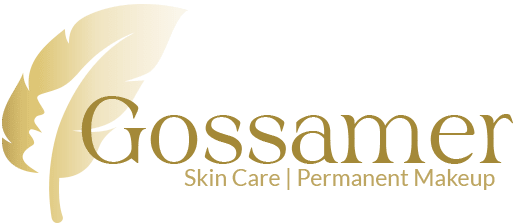
Permanent Makeup Frequently Asked
Questions
You have questions, I have answers!
Is Microblading and Permanent Makeup a Tattoo?
With the sudden popularity and media attention to the term Microblading and Permanent Makeup, many are led to believe it is not a tattoo process or that it is temporary. Permanent cosmetics, micropigmentation, dermal implantation, microblading/microstroking, eyebrow embroidery, semi-permanent makeup and long-time/long-lasting makeup, are all different names for the same procedure – cosmetic tattooing. Any time color is placed into the skin with any device, it is a tattoo process as defined by many well-informed regulators, the medical community, and dictionary sources. Denying this process is a tattoo can be problematic for those who would, for religious or other personal reasons, normally refuse to have a tattoo.
Is Microblading and Permanent Makeup really Semi-Permanent or Temporary?
Some are promoting Microblading or eyebrow embroidery as a semi-permanent process; and claiming that the color only reaches the epidermal (outer) layer of the skin. A careful review of basic skin anatomy and physiology would reveal this is not true. By definition and tattoo industry standards, color is tattooed/implanted into the dermis of the skin. If pigment particles do not reach the dermis, they will slough off and disappear during the healing phase of the skin, and during normal regeneration of cells at the epidermal level. Pigments do fade in the skin over time, but that does not make the process semi-permanent. It is impossible to predict how much pigment will fade away and how long it will take to do so with any measure of consistency or reliability. Our advice is to think of this as permanent – there will always be some shadow of color left in the skin, even after some years of fading without regular touch-ups or color boosts to add fresh pigment.
Why the Microblading technique does not last as long as other techniques
This is simply because a much smaller amount of pigment is inserted (tattooed) into the skin as compared to fully or solidly filled eyebrow tattoos. Microblading has a shorter lifespan than solid powder-fill eyebrows, and depending on factors such as chosen pigment (lighter pigments require more maintenance), your unique skin’s biology and lifestyle factors (such as sun exposure, medications, tinting the brows with peroxide-based hair color, the use of anti-aging skin care ingredients and treatments such as peels or lasers), you may need a touch-up or color boost as early as six to ten months after the procedure, with the average touch-up visit being done at twelve months. Other techniques or styles (such as Ombre or Powder look) may last twelve months to two years before a touch-up is needed.
All techniques of permanent cosmetics are considered LOW maintenance, but not NO maintenance. IF YOU DO NOT TOUCH IT UP in one to three years it may be faded, and it has the potential to turn different warm or cool colors, it may be blurred out or uneven looking as it fades. This happens and this is normal! This is why periodic touch-ups are done to make sure that this does not happen and your permanent makeup continues to look fresh. PLEASE BE AWARE OF THIS. This is not something that any technician has control over.
It is also a fact that, over the years of receiving color boost touch-ups, especially if done every 9 to 12 months instead of waiting longer, hair strokes tend to blur under the skin and become a more solid, powdery look. This is the nature of human skin itself and cannot be avoided. You’ll still have a beautiful brow, just not as crisp as the first time. Any technician who claims it’ll stay exactly the same over the years is simply selling you something and not being honest, or doesn’t have the experience to see what hair strokes look like five years down the road. Many clients happily convert to a softer, longer lasting Ombre or Powder style after a few years.
Be aware: The Microblading technique is not suited for everyone
- If you have combination to oily or very oily skin, the hair strokes will often times heal to a blurred, almost powdery look. Crisp, defined hair strokes are not guaranteed on this type of skin and you should expect that after a few touch-up appointments you will need to transition to a power brow style instead.
- If you have large pores or deep wrinkling in the brow area
- If your brows have been tattooed previously, because of color saturation and scar tissue, hair strokes may not be able to be obtained. The old pigment should be almost completely faded away. Please schedule a consultation FIRST and Tara will be able to tell you whether or not you are a candidate for the Microblading hair stroke technique.
- If you are a Fitzpatrick scale 3-6 (usually medium to dark skinned Hispanic, Middle Eastern or African American), the hair strokes may not be as visible as they are on lighter skin tones or heal as crisp as expected and another technique would better suit you.
- If you’re accustomed to filling in your brows with a solid powder or pencil makeup look, and want that same defined look every day, Microblading will not provide that look. You’ll feel that they look somewhat “unfinished” and want to add makeup over the hair strokes. An Ombre or Powder style is what you’re looking for! Just as beautiful, but more defined.
Microblading or Nano stroke technique can look TOO natural! We have other brow styles
If you are expecting the result of Microblading to look like you filled your eyebrows in with powder or pencil and to have the same crisp edges that makeup provides – you may be disappointed. Microblading is meant to emulate the look of real, natural brow hairs, with all the little gaps of skin showing in between the hairs! If you don’t like the look of a natural, makeup-free eyebrow, you may find Microblading is too natural in appearance for you. Tara has other options such as a combination technique of Microblading with a soft, powder background, or an Ombre or Powder fill that will look more defined. It’s important to know that not every technique will suit every person and Tara will advise you as to what will work best on your skin.
What do I look for when I'm choosing a Permanent Makeup artist?
Once you have made the decision to have Permanent Makeup applied you have the important task of finding a qualified technician to do the work for you. This is a critical decision. Locate a technician in the same manner you would a doctor, dentist, etc. Since there are no uniform regulations in the country, it is mandatory you learn as much as possible about the industry so you can determine who is a qualified professional in this field. Remember you are altering your appearance permanently so it is important you make your decision carefully and do not base the decision on price.
- It is important you visit the site where the work will be done. The Centers for Disease Control and Prevention (CDC) set standards for physical cleanliness and a sanitary working environment. Does the location you are visiting meet this outward criteria? Is there hot and cold running water on the premises other than in a rest-room? Is the work being done in a private room where other contaminants, such as acrylic nail dust, cannot circulate in the air?
- Is the technician registered with the state? Do they have their Body Art technician registration certificate on display in the work area? Remember that Body Art licensing is different from Cosmetology and Skin Care licensing, and just because someone is a licensed Hair Stylist, Manicurist or Esthetician in Washington state, it does not mean that they have been properly licensed for Permanent Cosmetics/Body Art!
- Is the facility or shop also registered with the state? Is the facility registration certificate on display?
- Is the technician clean and neat? Do they use new gloves for every client? Do they use disposable coverings on the bed or chair and are they replaced after every client? Are surfaces to be touched during the procedure wrapped in barrier film to prevent contamination? Are the technician’s nails clean and short?
- Most importantly, to prevent the transmission of diseases, do they use new sterile needles and equipment with each client? Are needles and equipment fully disposable? Are any metal handles Autoclaved or disposed of after use?
- Ask about the technician’s background. How long have they been in the industry and how many procedures have they done? Ask about certificates of training and continuing education. Since this field is rapidly evolving, regular continuing education is a must. For someone relatively new to the industry, ask how many hours of training they have had. How many hands-on procedures did they perform during training class? A one day or two-day training course, or internet training done remotely where practice is done on paper or latex practice skins and not real people is not enough and should disqualify the technician from your search. Your prospective technician should have at least 100hrs spent on real live skin in a Permanent Cosmetics Fundamentals course.
- Look at the technician’s portfolio and inquire if this is their own work (and not stock pictures from their training school or pictures of work done by their instructor). Does their work match your own personal style as it relates or relative to how intense the finished work is?
- What does their healed work look like? Ask for photos. A red flag is when they have NO healed photos of their own work to show you. Fresh procedures and healed procedures (especially with Microblading/Hair Strokes) can look very different.
- Is the procedure price a lot lower than other technicians in the area? Are they running deeply discounted specials or introductory pricing on a “local deals” type of website? Established technicians do not typically run these types of “local deals”, or specials and this can be a red flag that the technician is new to permanent cosmetics and Microblading. Some may ask, “What’s so bad about going to a new artist? Aren’t I getting a deal?” It takes years of consistent work on live people to become skilled at any form of tattooing, especially cosmetic tattooing of the face. Would you really want to be a brand new artist’s “practice” client?
As you do your research into this industry, bear in mind Permanent Cosmetics are a form of tattooing and must be thought of as lifelong. You will need regular color boost touch-ups over the years. It is important that you be comfortable with your technician before you start. You will have a special relationship with your technician. You must be confident he/she will give you a look you will be comfortable wearing for many years.
Medical Conditions that may prevent you from getting Permanent Makeup
Some medical conditions and treatments are contraindications and clients who have any of the below are not candidates for Permanent Makeup procedures:
- Heart problems such as Mitral Valve Prolapse
- Bleeding disorders (platelet, hemophilia, sickle cell)
- Uncontrolled Diabetes or insulin dependent Diabetics (subject to infections and delayed healing). Controlled Diabetes may be OK – Doctor’s clearance/note may be required.
- Active cancer being treated with Chemotherapy or Radiation
- Chemotherapy or Radiation in the past 12 months (may require doctor’s clearance letter)
- Some Autoimmune disorders (may require doctor’s clearance letter)
- Regular use of blood thinning medications or steroids
- Uncontrolled High Blood Pressure
- Ocular issues such as Glaucoma or eye pressure, ocular herpes simplex, ocular rosacea (for Eyeliner procedures only)
- Any treatment, medication, or illness that compromises the immune system / healing
- Pregnant or Breastfeeding (increased chance of infection and complications due to hormonal changes in the skin – wait until finished)
